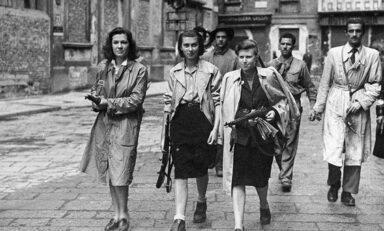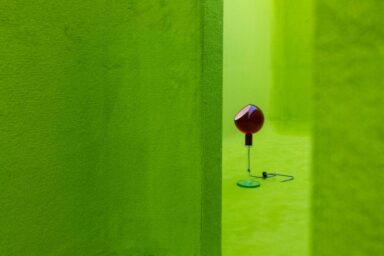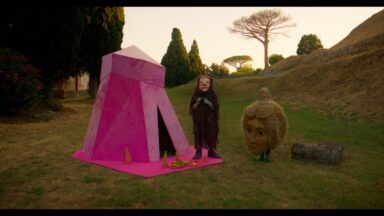In the heart of old Milan, only a few steps away from the remains of Maximianus’ Imperial Palace, a new initiative graces daily walkers with unexpected works of art
Text by: Domenico Costantini
In the centre of old Milan, there is a small shop window in Via Gorani 8a, right in the heart of the 5 streets, a stone’s throw from the remains of the Imperial Palace of Maximianus. The innate ambiguity of this transparent diaphragm leads to the birth of a splendid little project: “Quadri da marciapiede” (Sidewalk paintings) is an idea conceived by Olimpia Rospigliosi and curated by Bohdan Stupak.
If the health emergency has temporarily shut down most venues dedicated to art making it difficult, if not impossible, to visit both public and private galleries, this initiative captures the attention of the passer-by and art enthusiast alike through artworks which, despite having all the characteristics of a dream image, stand clear in front of our eyes in all their physical immanence. Situated along the street, the shop window is a transparent wall that insinuates itself into the opacity that surrounds it and lets us step into different, extraordinary worlds where imagination is key. It is precisely this element that constitutes the fascination of this glass wall, which allows anyone on the street to ‘enter’ the building while also revealing the interior to those strolling around.


Thanks to such reciprocal exchange, a new space is created in the shop window which, nourished by this ambivalence, can be defined as another place, a plausible but unnatural alibi, subject to continual mutations. Its characteristics are configured on the basis of factors that do not exclusively concern the enhancement of the goods on offer, thus paradoxically allowing this “non-place,” specifically thought for the “Quadri da Marciapiede” initiative, to play an active part in defining the physiognomy of the street.
The COVID-proof unexpected exhibition shares the street with other shops and shop windows located on the same street; a place that was transformed into a safe space for culture, where numerous pieces of art succeed in engaging the public, caught off guard on their daily walk. Thanks to the initiative’s own QR code, walkers will be able to discover everything they need to know about the project. From an advertising point of view and precisely because of its position as an element of the urban fabric, the shop window plays an important role as — quoting Bruno Munari’s words, one of the first artists and designers to focus on this typology of installation — this carries out a “direct action” sponsoring art in a simple, yet intelligent way. Something much needed in today’s uncertain and often culturally sterile times.












